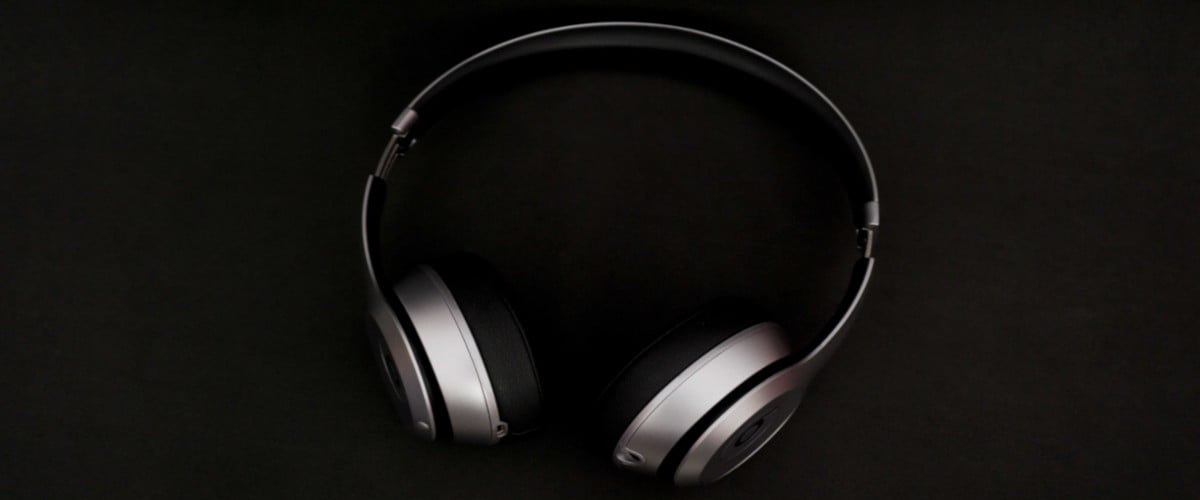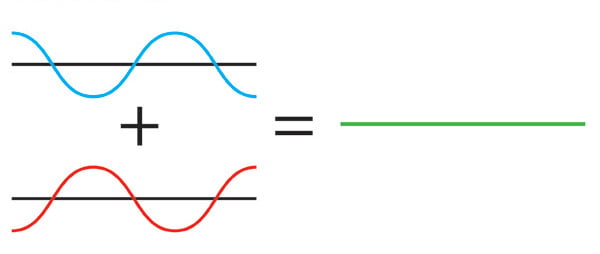
Passive, Active, and Adaptive Noise Cancellation
When it comes to noise-cancelling headphones, there are several different types of technology available, each with its own unique features and benefits. Passive, active, and adaptive noise cancellation all work to reduce unwanted background noise, but they do so in different ways. In this article, we’ll explore the differences between passive, active, and adaptive noise cancellation, and help you decide which type of noise-cancelling headphones are right for you.
Check out our favourite noise-cancellation earbuds here
Active Noise Cancellation
Over the past few years, Active Noise Cancellation (ANC) technology has grown in popularity as a headphone feature as consumers search for ways to improve their audio experience by reducing background noise. This technology generates phase-flipped sound waves that are “negative,” or the opposite, of the background noise. This effectively cancels out the background noise and creates a quieter listening environment.
A microphone is used by active noise-cancelling headphones to capture and analyze ambient noise in real-time. The “anti-noise” sound waves are then produced using this data and played through the headphones in order to drown out outside noise. As a result, background noise is noticeably reduced, which can significantly enhance the listening experience for music, podcasts, and other audio content.

By blocking distracting noise in busy environments like airports, trains, or noisy offices, active noise cancellation headphones can significantly reduce stress and strain on the listener. As a result, you may be able to concentrate better, feel less worn out, and experience less stress. As background noise can interfere with sound quality, reducing ambient noise can also enhance the audio quality of the content being listened to.
Feedforward and feedback ANC are the two main types of active noise cancellation found in earbuds. In contrast to feedback ANC, which tracks the sound inside the earcup and modifies the anti-noise signal accordingly, feedforward ANC uses the microphone to detect outside noise and cancel it out before it reaches the ear. Both techniques work well, but feedforward ANC typically performs better at eliminating low-frequency noise, such as engine noise, whereas feedback ANC performs better at eliminating higher-frequency noise, such as human speech.
The effectiveness of active noise cancellation technology can also be impacted by the earbuds’ frequency response. Wider frequency response in some earbuds can help block out a wider spectrum of noise frequencies. This may lead to a better audio experience as well as more effective noise cancellation.
Who Should Use Active Noise Cancellation Earbuds?
The way people listen to music and other audio has been revolutionized by active noise cancellation technology. ANC earbuds can enhance focus, concentration, and audio quality while lowering stress and fatigue levels by eliminating distracting background noise. In order to find the best option for your needs, it’s crucial to take into account aspects like the kind of noise-cancelling technology, the earbuds’ design, and the frequency response of the headphones when selecting a pair of ANC earbuds.
Passive Noise Cancellation
Modern earbuds feature passive noise cancellation technology, which gives users an efficient way to block out background noise and other distractions. Passive noise cancellation relies on physical isolation of the ear canal as opposed to active noise cancellation, which blocks out unwanted sounds using microphones and digital signal processing algorithms. The main idea behind this technology is straightforward: to put a barrier between the ear and outside noise, preventing it from getting in.
The size, shape, and material of the ear tips will affect the degree of passive noise cancellation. A user can select the ear tip that offers the best fit and the greatest level of noise isolation from a variety of sizes that some earbuds include. Additionally, some earbuds use silicone or memory foam components that can conform to the shape of the ear, resulting in a tighter seal and even better noise isolation.
In order to physically seal off unwanted noise, passive noise cancellation in earbuds uses specialized ear tips that fit snugly into the ear canal. This kind of noise cancellation is frequently referred to as “noise isolation” because it actually isolates the ear from outside noise rather than actively cancelling it out.
The ability of passive noise cancellation in earbuds to effectively block out low-frequency sounds like engine hum or traffic noise is one of its main advantages. This is because the ear tips seal off the ear canal, blocking these noises from entering. For instance, passive noise cancellation in earbuds allows you to listen to music or other audio content at a lower volume while still hearing it, lowering the risk of hearing loss.
Passive noise cancellation also has the advantage of not requiring batteries, which makes it more convenient for users who don’t want to be concerned about charging their earbuds. For travellers who don’t want to worry about battery life while they are on the go, this can be especially useful. Passive noise cancellation can also be more durable than active noise cancellation because it doesn’t need any additional processing power, making it perfect for use in challenging environments.
Who Should Use Passive Noise Cancellation Earbuds?
When using earbuds, passive noise cancellation is a practical and efficient way to eliminate background noise and other distractions. This technology is excellent at reducing low-frequency noise and doesn’t require batteries, so it’s perfect for people who travel frequently or don’t want to worry about charging their earbuds. Passive noise cancellation is also a more resilient option than active noise cancellation, making it perfect for use in demanding settings like sports and the gym. Because they are typically less expensive than Active Noise Cancelling earbuds, Passive Noise Cancelling earbuds are the best option for people on a budget.
Adaptive Noise Cancellation
Active Noise Cancellation systems with programmable thresholds are what adaptive noise cancellation earbuds are all about. Noise cancellation technology will be bypassed once a sound reaches a certain volume, allowing it to be heard (often used for emergency sounds like car horns, sirens, etc.).
This programmable threshold gives adaptive noise-cancellation earbuds a customizable feature that is advantageous to the user. Improved battery life is another advantage of Adaptive Noise Cancelling in earbuds. Earbuds are much more portable and use less power than conventional noise-cancelling headphones, which need big batteries to power the electronics. This enables Adaptive Noise Cancelling earbuds to offer long-lasting battery life, making them perfect for use on long journeys or commutes.
Comparing adaptive noise cancelling in earbuds to conventional noise-cancelling headphones, the price of this solution is also relatively low. The cost of earbuds with this feature has remained relatively low, despite the fact that the technology is growing in popularity, allowing users to enjoy the advantages of noise cancelling at a fraction of the price of conventional earbuds.
Who Should Use Adaptive Noise Cancellation Earbuds?
Earbuds with adaptive noise cancellation offer users a more customized noise cancellation experience, better sound quality, and longer battery life. Users who want the advantages of noise-cancelling technology without having to pay more for conventional earbuds can use it as a cost-effective alternative. For those seeking a more dynamic noise-cancelling experience, these earbuds are ideal.
